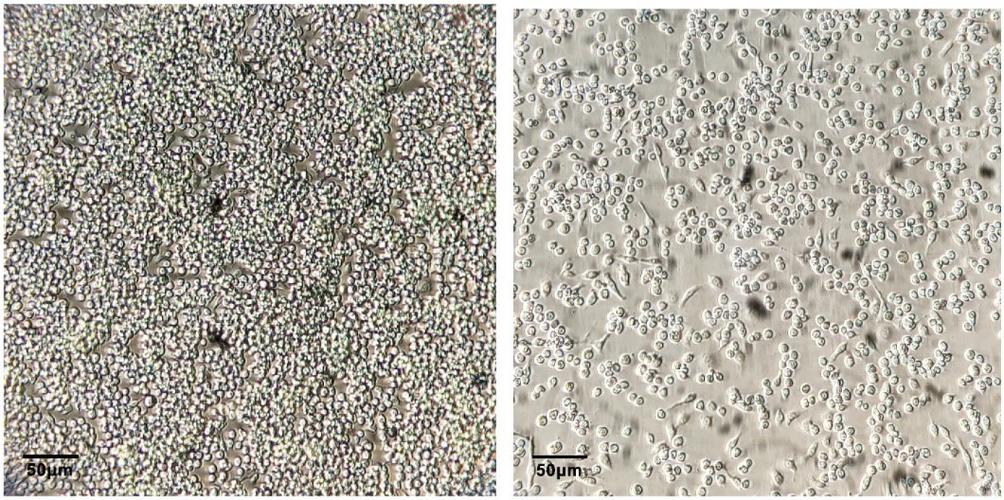Key Factors Affecting Cell Culture: Cell Density
News 31 7 月, 2024
Cell Culture Insights
Cell culture is a fundamental experimental technique in biological research. Successful cell culture is essential for advancing cell biology studies.
Among the many factors influencing cell culture conditions, cell density stands out as a critical one.
Understanding Cell Density

Cell Density
1. What is Cell Density?
Typically, cell density refers to the number of cells per unit area or volume.
The optimal cell density for cell culture depends on the specific cell type and the purpose of the culture. Different cells have varying requirements; some cells thrive at high densities, making it essential to adjust during resuscitation and passage.
For instance, slow-growing cells like endothelial cells benefit from a slightly higher initial cell density to promote better growth conditions. Conversely, fast-growing cells like macrophages or certain tumor cells prefer a lower initial density to optimize their growth state.
So, how exactly does cell density impact cell culture?
01. Influence on Growth Rate
Firstly, cell density directly affects the growth rate of cells.
At lower cell densities, cells have more space and nutrient availability, allowing for faster growth and proliferation.
However, at higher cell densities, cells compete for limited nutrients and space, leading to a reduced growth rate.
Therefore, maintaining an appropriate cell density is crucial to balancing growth rate and cell number.
02. Impact on Cell Differentiation
Secondly, cell density influences cell differentiation.
At lower densities, cells tend to differentiate into a greater variety of types, whereas higher densities encourage cells to remain in an undifferentiated state.
This is because, at low densities, there is less cell-cell interaction, promoting differentiation. In contrast, high densities increase cell interactions, leading to a tendency to maintain an undifferentiated state.
03. Effect on Cell Metabolism
Additionally, cell density impacts cell metabolism.
At lower densities, cells require more nutrients to sustain their growth and reproduction, resulting in increased metabolic rates.
However, at higher densities, increased cell interactions and competition necessitate more metabolic products for survival and growth, thereby reducing the metabolic rate.
Controlling Cell Density
Understanding the impact of cell density on cell culture allows for practical applications in experimental settings.
Adjusting Cell Seeding Density
During cell experiments, cell density is commonly measured using a hemocytometer. With technological advancements, more sophisticated cell counters are now available, providing more efficient and accurate density calculations.
Choosing the Right Culture Vessel
Generally, plastic vessels are better suited for slow-growing cells, while glass vessels are more appropriate for fast-growing cells. For the same cell type, plastic vessels may be more effective during slow growth phases (e.g., post-resuscitation or primary culture), while glass vessels may be preferable during rapid growth phases.
Note: These guidelines are general and should be adjusted based on specific experimental conditions.
Supplying Nutrients
Adjusting the concentration and supply of nutrients in the culture medium can achieve the desired cell density. By modifying the ratio of serum to basal medium or the proportion of growth factors to basal medium according to the physiological characteristics of the cells, the growth rate and, subsequently, the cell density can be regulated.
Conclusion
Cell density, a critical factor in cell culture, significantly impacts cell growth, differentiation, and metabolism. Proper control of cell density through thoughtful adjustments in seeding density, culture vessel selection, and nutrient supply ensures optimal conditions for successful cell culture experiments. By mastering these techniques, researchers can enhance the reliability and outcomes of their cell biology studies, driving forward our understanding of cellular processes.